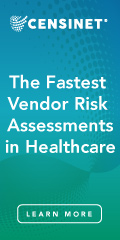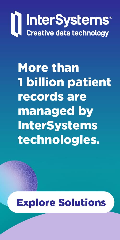Readers Write: Mission Impossible: Transitioning to Value-Based Care with Health IT Solutions
Mission Impossible: Transitioning to Value-Based Care with Health IT Solutions
By Victor Lee, MD

Your mission, should you choose to accept it, is to partake in the nation’s efforts to transition our healthcare system from volume-based care and fee-for-service (FFS) reimbursement models to value-based care.
If you are in clinical practice or hospital administration, chances are that you have accepted this mission. Like Ethan Hunt, what choice did you really have?
Earlier this year, the US Department of Health & Human Services (HHS) announced specific goals for shifting Medicare reimbursements from volume to value. Under this plan, 90 percent of all traditional FFS Medicare payments would be tied to quality or value and 50 percent would be tied to alternative payment models by the end of 2018. What does all this mean?
For background information, see this fact sheet which summarizes the payment taxonomy framework that HHS has adopted to categorize its payment reform programs. Briefly, Category 1 is traditional FFS with no link of payment to quality. Category 2 is FFS with a link to quality which includes pay-for-performance programs such as Hospital Value-Based Purchasing, Readmissions Reduction Program, and Hospital-Acquired Condition Reduction Program.
Categories 3 and 4 include alternative payment models, where the difference between them is that category 3 programs are built on top of an FFS architecture (e.g., accountable care organizations, medical homes, bundled payments), while category 4 programs completely move away from FFS and exclusively involve population-based payments (e.g., eligible Pioneer accountable care organizations in years 3-5).
Now that we’ve characterized the impossible mission, let’s look at some tools you can use along your journey. There are no spy trinkets, laser beams, toxin antidotes, or heavy artillery involved. Rather, I am referring to newer, innovative solutions proven to maximize clinical and financial outcomes such as clinical decision support (CDS) and mobile care coordination.
The Office of the National Coordinator for Health Information Technology (ONC) defines CDS as “a process for enhancing health-related decisions and actions with pertinent, organized clinical knowledge and patient information to improve health and healthcare delivery.” A classic example of CDS is a pop-up alert that provides guidance to clinicians at the point of care. However, the Centers for Medicare & Medicaid Services asserts that there are many other common forms of CDS in addition to alerts, all of which may be used to satisfy the CDS objective within its EHR Incentive Programs. Which ones have you used on your mission?
Admittedly, many providers have already successfully implemented a variety of CDS interventions in their EHR systems or are somewhere along that journey, so the concept of implementing CDS for quality improvement is not new. However, many organizations struggle with keeping CDS updated over time as new information from clinical trials, guidelines, and performance measures emerges.
Fortunately, there are solutions to help with this part of the impossible mission, including third-party evidence surveillance or software applications that analyze CDS from EHR systems to identify potential deviations from evidence-based best practices.
Care coordination has also been part of a national dialogue, with the Agency for Healthcare Research and Quality (AHRQ) including care coordination as one of its six National Quality Strategy priorities. Care coordination is also explicitly required in certain regulations such as Meaningful Use (mentioned earlier) and the Medicare Shared Savings Program, with the latter specifically requiring the use of “enabling technologies” to support care coordination. So clearly the impossible mission is less likely to be completed in the absence of care coordination, but what solutions are available?
A classic example of a care coordination solution is HIPAA-compliant text messaging. However, newer care coordination solutions take this a step further and incorporate person-centered and evidence-based approaches to ensuring safe and timely transitions of care across providers and venues. Some solutions embrace mobile platforms to ensure accessibility at every point of a person’s care journey.
In summary, our nation’s path toward healthcare reform may appear to be daunting if not nearly impossible. However, the HHS prescription for payment reform and its taxonomy for measuring progress toward its goals includes programs that are dependent on lowering costs, promoting care coordination, and optimizing quality of care. Fortunately, advanced solutions are at your disposal today that transform the mission from one that is seemingly impossible to one that is probable if not inevitable.
This message will self-destruct after we have completed the transition to value-based care.
Victor Lee, MD is vice president of clinical Informatics at Zynx Health of Los Angeles, CA.



















































































Cant you sue the F&B company for fraud if they said they paid you money but never did?